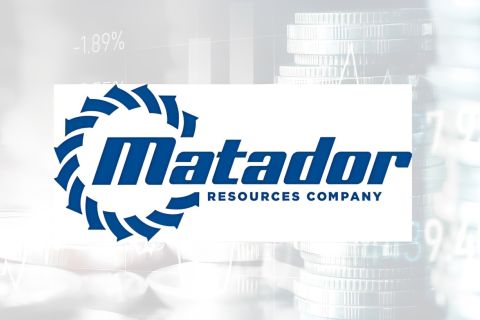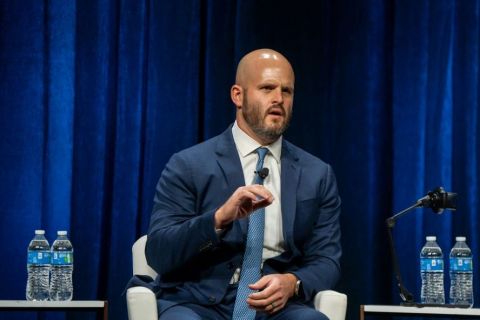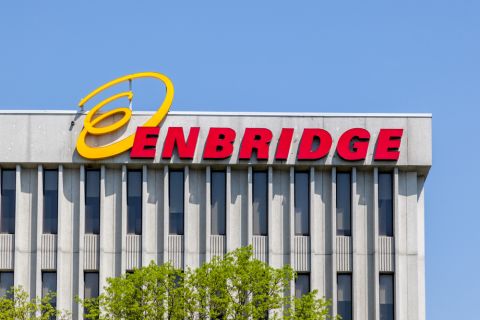Jordan Blum, editorial director, Hart Energy: We're here at Hart Energy's A&D Strategies and Opportunities conference in Dallas. I'm joined for this Hart Energy LIVE Exclusive interview with Trevor Howard, the senior vice president and CFO of Kinetik.
So y'all are a relatively new company in terms of name. Kinetik was early last year, I think, but can you kind of take me through the transformation of it was EagleClaw [Midstream] and Altus Midstream?
Trevor Howard, senior vice president and CFO, Kinetik Holdings Inc.: Yeah, absolutely. So Kinetik, as you had mentioned, was born in February of 2022 through the combination of legacy Altus Midstream, which is a public company that was a SPAC that ended up becoming public in the late 2010s. It was really predicated on the development of midstream infrastructure designed to handle the Alpine High and then non-operated ownership interest in pipelines that would transport that crude natural gas and natural gas liquids that was coming out of the Alpine High. For a handful of reasons, macro related and then also upstream related, I'd say that there was a bit of a change in the business outlook and the business strategy, but very good assets, really good assets, and our company, because the management team from Kinetik today is the formal EagleClaw management team—that was a greenfield company that was born over 10 years ago—ended up building that under EnCap Flatrock and sold to Blackstone in 2017. We had a transformative merger where we bought Caprock and Pinnacle, brought in a strategic partner on the financing side with I Squared Capital out of Miami, and we are running a 1.3 Bcf/day solely gathering and processing business with a non-operated and ownership interest in Permian Highway Pipeline.
And when we looked at what Apache and Altus wanted to do with the company, we were a great fit for them. They had state-of-the-art facilities, they had excess processing capacity, but I'd say that where their footprint was was a bit geographically disadvantaged to capitalize on the Delaware Basin gas growth that we are currently seeing. And so the strategy was to connect both of the systems and use our gathering network and then use their processing capacity and grow the business together in a very capitally efficient, highly free cashflow conversion way.
That was really the genesis for bringing companies together. We have embarked on this public company's life of ours since February of 2022, and I'd say it's been great so far. We've announced three very interesting projects that are the preponderance of our 2023 capital budget and are continuing to execute exactly on that strategy, which is continuing to pull gas from different parts of the basin and utilize the existing infrastructure further south and west.
JB: Very good. I think the next big thing you'll have, you briefly mentioned the Permian Highway Pipeline. That's a partnership with Kinder Morgan. Can you just talk about how big a deal that is, how soon it's coming online?
TH: Yeah, sure. And a little history there too. Interestingly, both Apache and EagleClaw were the original strategic partners with Kinder Morgan in developing that pipeline back in 2018. It reached full in service Jan. 1, 2021, and then in June of 2022, we decided to move it from, or expand it from a 2.1 Bcf/d pipeline to a 2.65 Bcf/d pipeline, which will be the largest eastbound … gas pipeline for the Permian Basin. Construction's going well thus far. It's expected to come online Dec. 1 of this year and provide a much-needed increase in gas capacity for takeaway for gas, which we see as being very constrained. There's the Whistler [Pipeline] Project that's coming on right now. There's the Permian Highway Project that's coming on later this year, and then Matterhorn [Express Pipeline]. Collectively that's about 3.6 Bcf/d of growth. And this basin has demonstrated that it's growing between 1.5 [Bcf/d] and 2 Bcf/d a year. And so we see that even with these capacity expansions, which are much needed, the basin's still likely going to be tight come the early parts of 2026. And so we are excited to participate in a handful of ways so that gas gets pulled through our infrastructure and then look forward to being active in the build out of the natural gas value chain all the way from wellhead down to the Gulf Coast.
JB: Great. And you're obviously incredibly Delaware Basin-focused and there's probably nowhere better to be. Is the plan to just keep growing there or are y'all have eyes on the Midland or anywhere else?
TH: Yeah, this company was born in the Permian and really born in the Delaware. And I'd say that we like being the only pure play Permian midstream company out there today, that's public. And I would say that it's very unlikely that we would ever deviate outside of the Permian. It's what we know, it's where our customers are, it's where we see the greatest opportunity. And then drilling down on that comment a little bit further, I'd say that it's most likely that we stay a pure play Delaware Basin company. Again, just reiterating the point that I just made, which is these are where our customers are, this is what we know, this is where our existing kit and our footprint is. Greenfield midstream is very difficult from a competitive perspective. And as we think about just potentially getting footprints in, say the Midland on an inorganic basis, you're competing against giants over there. And so that basin is very consolidated.
I'd say the Delaware Basin being five to 10 years behind the Midland, both on the upstream and the midstream side, or it's pretty fragmented relative to the Midland. And so we still have 10 to 12 decently sized midstream players, both public and private. And so I think that consolidation will continue to ensue in the Delaware and look, potentially there's ways for us to participate, but we have a great opportunity set from an organic perspective in the Delaware Basin and we are really excited to keep capitalizing on that. We've had great momentum throughout 2022 and 2023 when we combined the businesses. And if you include the expansion of one of our processing facilities, the Diamond Cryo[genic Facility], we had about 900 million cubic feet a day of open space. And today we sit at about 300 million cubic feet a day. So that's three cryos that we've effectively either filled with existing customers and their volume growth or market share gains with new agreements and new customers in different parts of the basin. And so we're firing on all cylinders and we look forward to continue to do that in ‘24 and ‘25.
JB: Really interested to continue watching the growth. Thank you so much for joining us here today at the A&D Strategies and Opportunities conference. To read and watch more, please visit online at hartenergy.com.
Recommended Reading
Matador Stock Offering to Pay for New Permian A&D—Analyst
2024-03-26 - Matador Resources is offering more than 5 million shares of stock for proceeds of $347 million to pay for newly disclosed transactions in Texas and New Mexico.
ProPetro Reports Material Weakness in Financial Reporting Controls
2024-03-14 - ProPetro identified a material weakness in internal controls over financial reporting, the oilfield services firm said in a filing.
Sunoco’s $7B Acquisition of NuStar Evades Further FTC Scrutiny
2024-04-09 - The waiting period under the Hart-Scott-Rodino Antitrust Improvements Act for Sunoco’s pending acquisition of NuStar Energy has expired, bringing the deal one step closer to completion.
Enbridge Advances Expansion of Permian’s Gray Oak Pipeline
2024-02-13 - In its fourth-quarter earnings call, Enbridge also said the Mainline pipeline system tolling agreement is awaiting regulatory approval from a Canadian regulatory agency.
BP’s Kate Thomson Promoted to CFO, Joins Board
2024-02-05 - Before becoming BP’s interim CFO in September 2023, Kate Thomson served as senior vice president of finance for production and operations.





